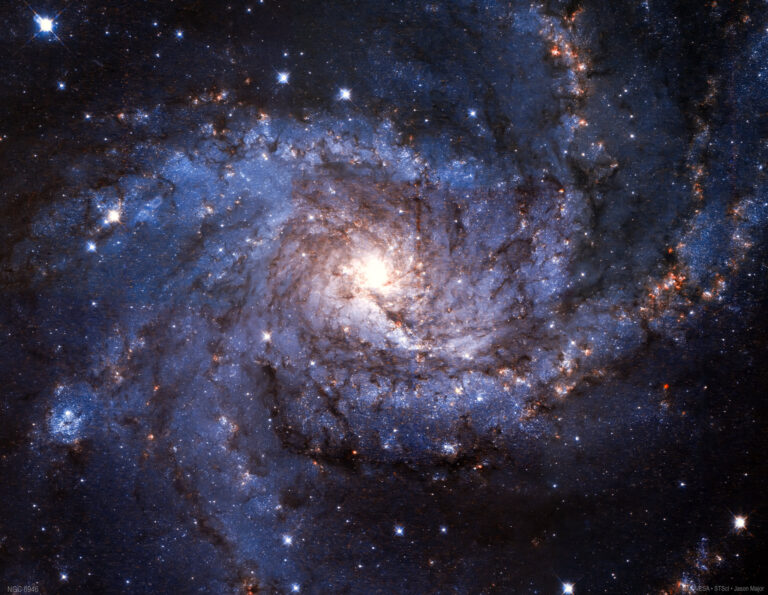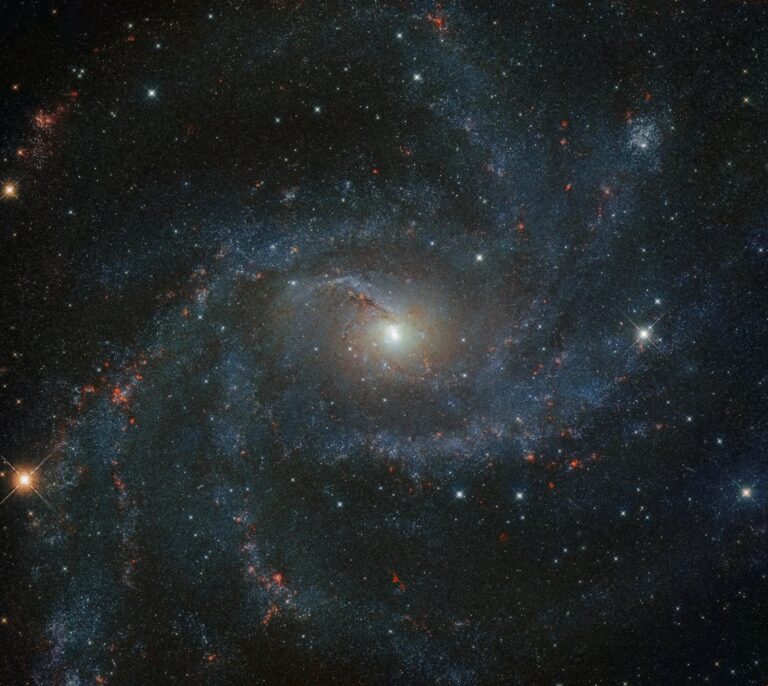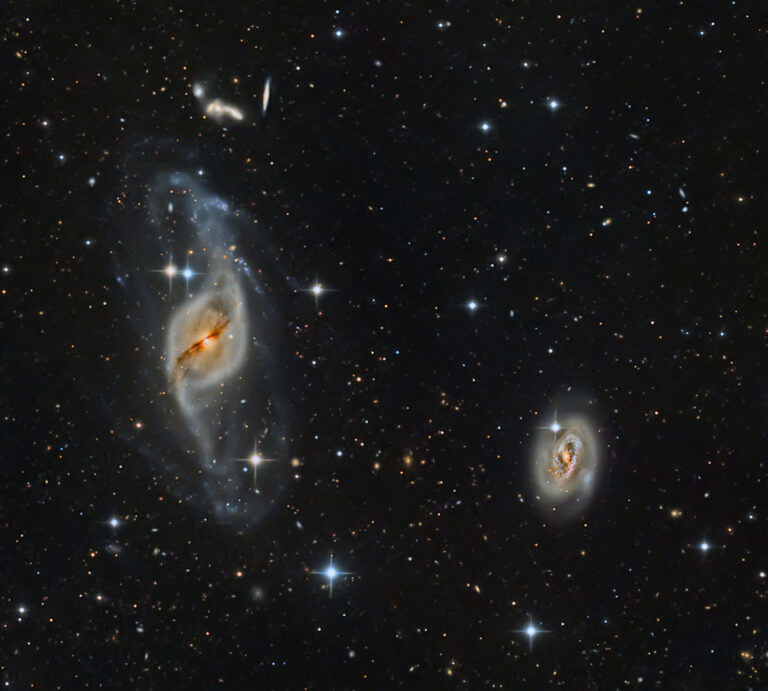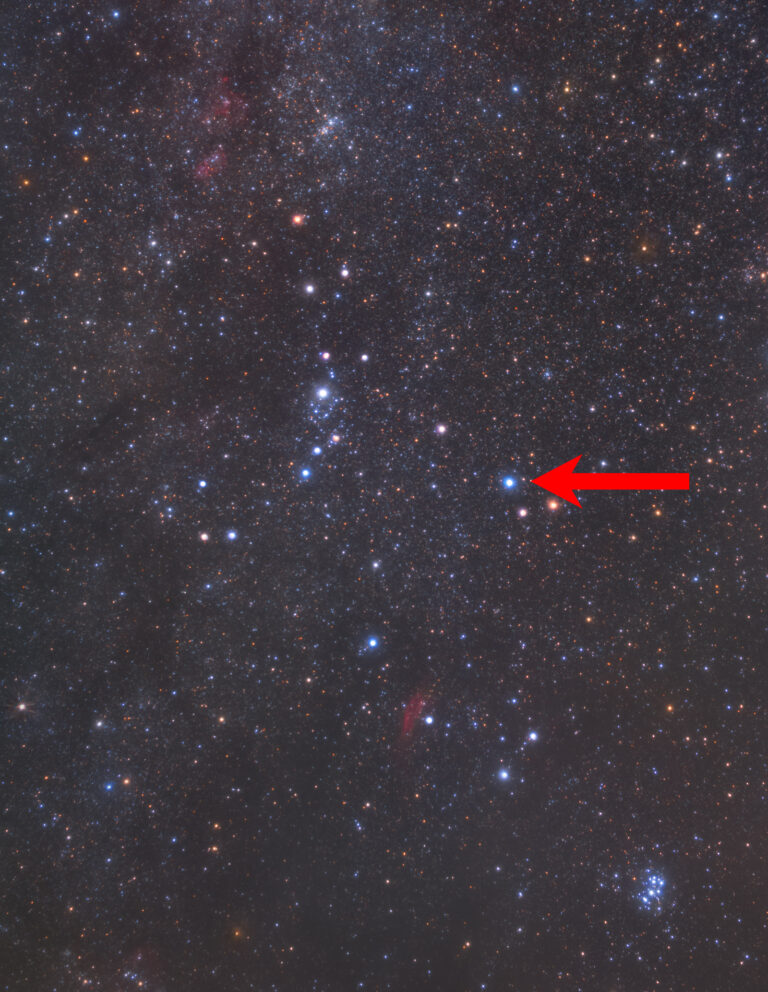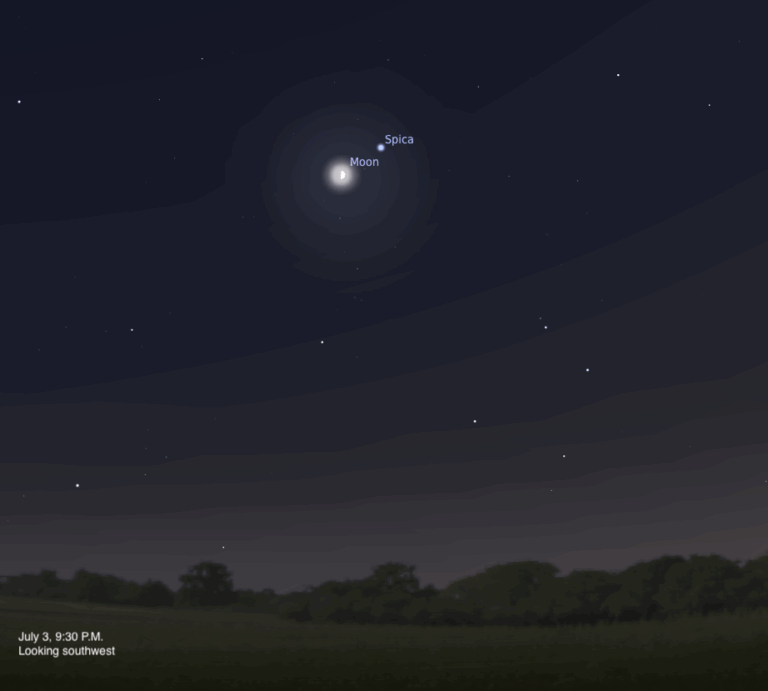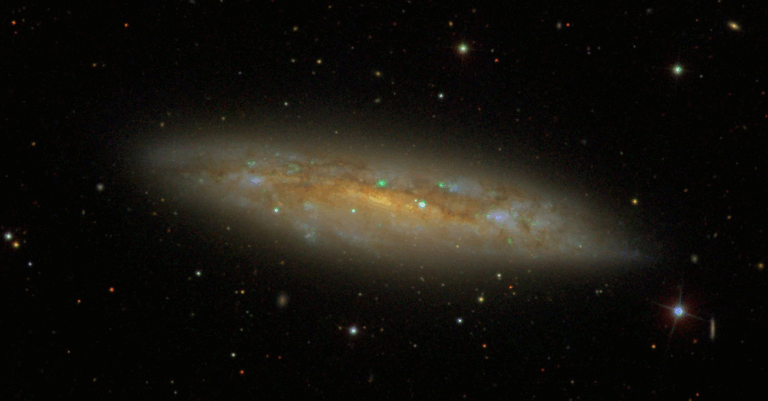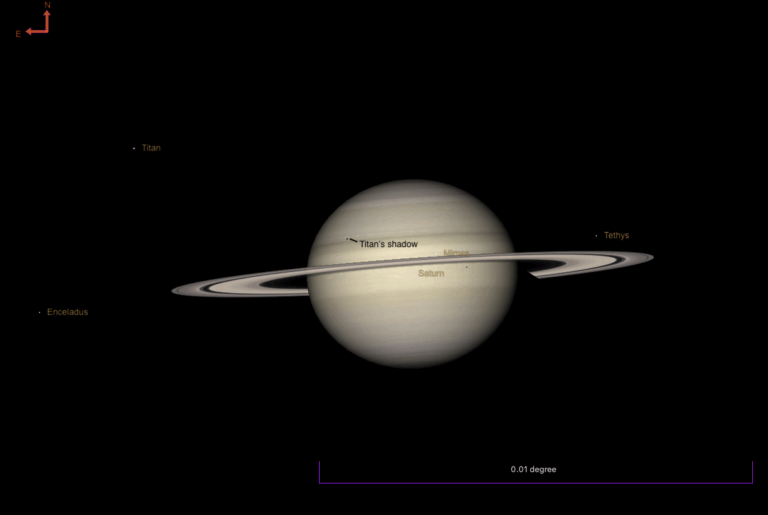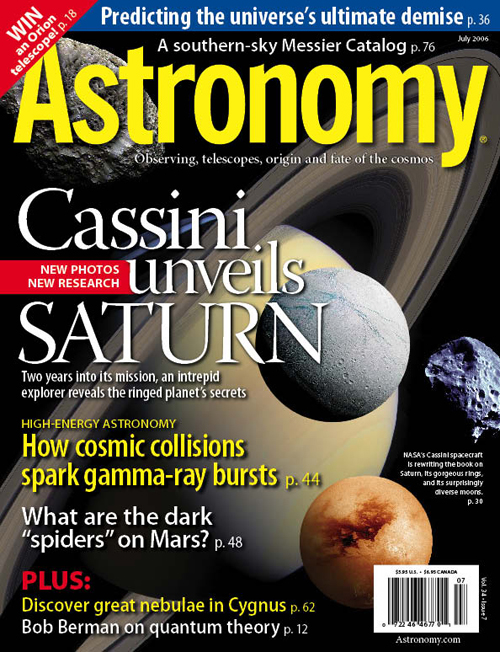
The July 2006 Astronomy will be on newsstands Tuesday, June 6. To download a high-resolution version of the July cover, click "larger image.". Credit: NASA.
Key Takeaways:
For more information, contact:
Matt Quandt
Assistant editor
[t] 262.796.8776 x419
[e] [email protected]
May 30, 2006
Matt Quandt
Assistant editor
[t] 262.796.8776 x419
[e] [email protected]
May 30, 2006
Astronomy offers publication-quality images below.
More Astronomy resources:
Astronomy news
This week’s sky events
Astronomy basics
Glossary of astronomical terms
Return to Astronomy “For the media” page
In addition to in-depth features, readers can find all the information they need to enjoy July’s night sky, including: Jupiter’s bright appearance, the crescent Moon passing in front of the Pleiades star cluster, and Mars and Saturn visible in the west-northwest.
“Cassini unveils Saturn”
Nearly 2 years into its extraordinary mission, NASA’s Cassini spacecraft reveals the ringed planet’s secrets. Saturn’s moon Hyperion looks like a battered sponge. Its moon Phoebe may be a captured comet. Enceladus hosts icy geysers. Titan still has much to tell. Imaging team member Alfred S. McEwen reviews highlights from Cassini’s mission.
“Where is the universe heading?”
To find out how it all ends, scientists need to understand what makes up the universe. Everything and everywhere began about 14 billion years ago in the Big Bang. Since then, a massive expansion of space-time has carried galaxies far away from each other. After American astronomer Edwin Hubble discovered this expansion in the 1920s, the question of how the universe will end has been on astronomers’ minds. James Trefil, the Clarence Robinson professor of physics at George Mason University, authors this intriguing cosmology article that features a super illustration “Divining the universe’s fate.”
“Spiders from Mars”
Branching patterns on Mars’ south pole link the planet’s climate to its most prominent landforms. Astronomy Associate Editor Francis Reddy takes a close look at images provided by NASA’s Mars Global Surveyor and explains the significance of these “spiders” that occur only in the Red Planet’s south polar region.
Other stories include:
“Witness to cosmic collisions” – NASA’s Swift mission helps astronomers unlock the 35-year-old mystery of what causes short gamma-ray bursts – the most powerful explosions in the universe.
“Discover great nebulae in Cygnus” – Glowing gas and dark dust mingle in spectacular ways among the Swan’s star clouds.
“Death looms in the darkness” – A young star cluster faces an early death from the black cloud that created it.
“A southern-sky Messier Catalog” – From south of the equator, you can observe 152 Bennett objects as impressive as the best in the north.
“Astronomy solar-eclipse adventures” – Astronomy editors and readers view the Sun’s corona from two Mediterranean locations.
“Designed to shoot the sky” – Canon’s EOS 20Da camera sets a new standard for astrophotography.
The July 2006 Astronomy also includes Ask Astro, Astro news, Bob Berman’s strange universe, Glenn Chaple’s observing basics, Phil Harrington’s binocular universe, The sky this month, New products, and Reader gallery.
Copies available
To request a copy of the July 2006 Astronomy or to set up an interview, please contact Matt Quandt: 262.796.8776 x419, [email protected].
Astronomy‘s mission
Astronomy promotes the science and hobby of astronomy through high-quality publications that engage, inform, entertain, and inspire.

